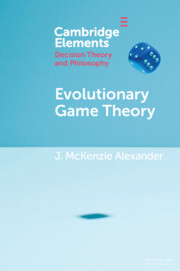Element contents
Evolutionary Game Theory
Published online by Cambridge University Press: 07 March 2023
Summary
Keywords
- Type
- Element
- Information
- Online ISBN: 9781108582063Publisher: Cambridge University PressPrint publication: 23 March 2023
References
- 8
- Cited by

